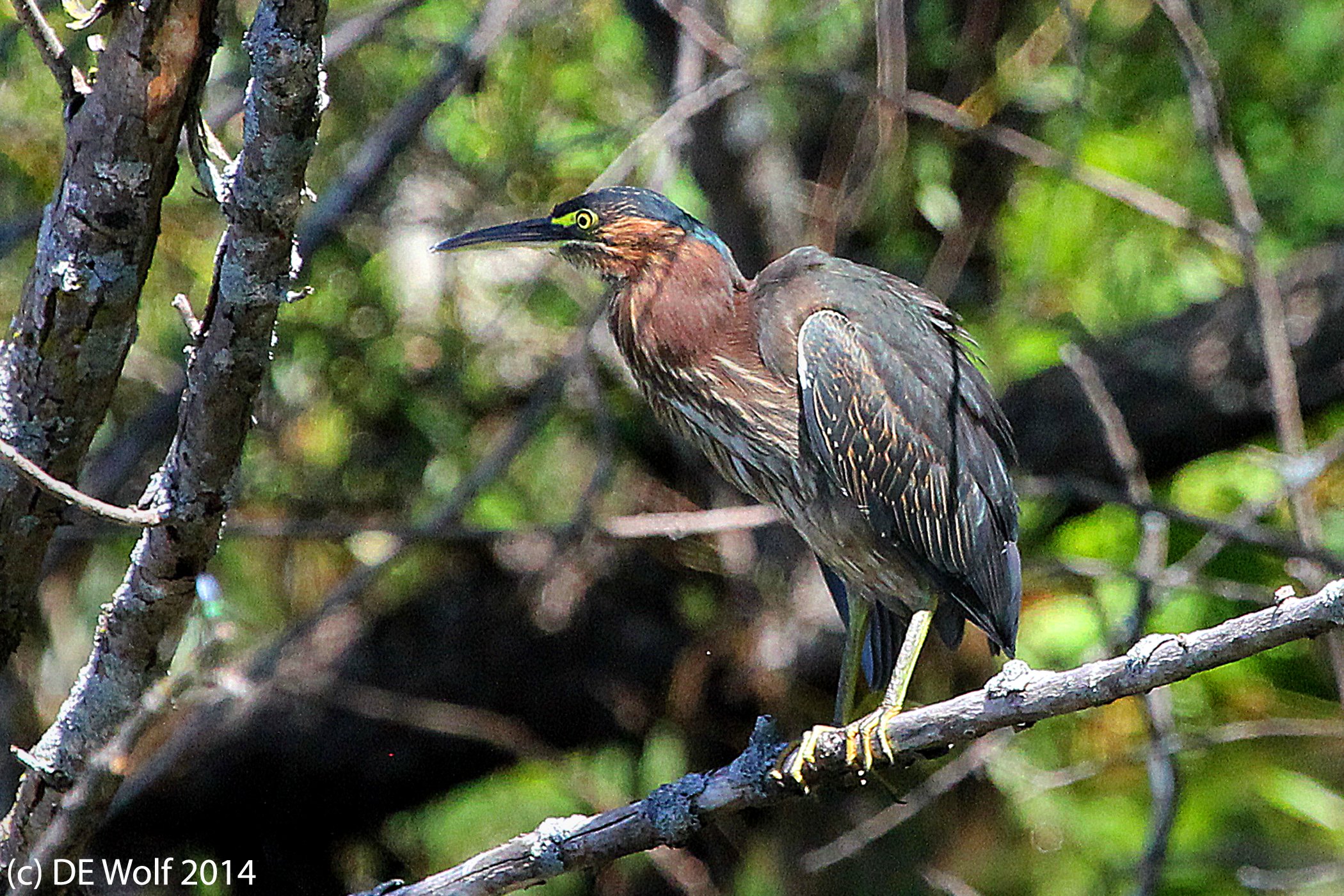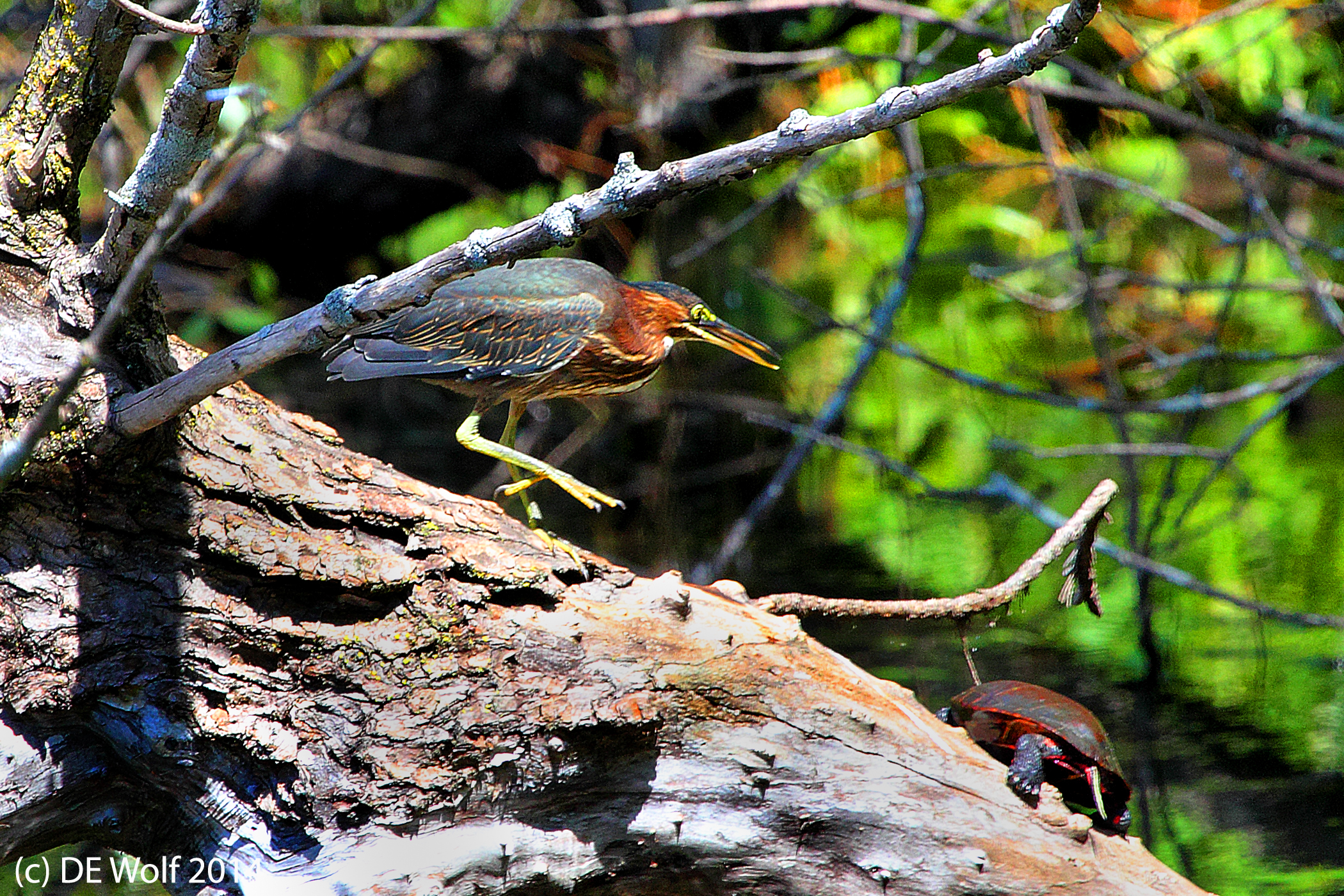For the last couple of weeks, I have had my eyes on a group of green herons (Butorides virescens) that are summering at a place called Black’s Nook in Cambridge, MA’s Fresh Pond Reserve. While smaller than the great blue heron (Ardea herodias ), the green heron is beautiful for its iridescent green and blue coloration.
So finally, on Friday I schlepped my big lens and monopod to Black’s Nook and sought out my avian friends. While they are not totally fond of visitors, they tolerate them, and I was not disappointed. I learned once more that I have a lot to learn about shooting at 400 mm (really 640 mm with the sensor factor). Even with the monopod it is hard to hold the camera still enough to get the spot autofocus right. I set the ISO at 1600 so that I could use a 1/200th sec exposure, that to hopefully stabilize things. Indeed, if you compare Figure 1 shoot at 1/2000th sec and Figure 2 shot at 1/500th sec, you’ll see that the sharpness award goes to the shorter exposure despite the image stabilization. And then the trick is shoot, shoot, shoot – just keeping shooting. I am starting to think that the tripod without image stabilization is the better way to go. That’s how I got my “Supre Moon” picture. I recently bought myself a set of Manfrotto quick releases, enough to cover all my lenses, my monopod, and my tripod.
When I got home I sorted through the images for sharpest and best pose. I am pretty happy with Figure 1, which I hope shows Butorides virescens to best advantage and in all its glory. Sharpness is always a big deal for me, but also, of course, the composition and lighting are important.
The proverbial “they” always tell you that you should photograph a bird doing something interesting, something that speaks of its behavior. So I also include Figure 2. When this fellow landed on this particular log, he found it was already occupied by a turtle sunning itself. The heron approached the turtle and the two contemplated each other for a moment. The turtle quickly retreated into its shell. Finally, the emboldened heron charged the turtle chasing him off of the log. It is this moment of avian assault and reptilian retreat that Figure 2 captures.
Figure 1 – Canon EF100-400mm f/4.5-5.6L IS USM lens using IS 1 at 400 mm. ISO 1600 with 1/2000th sec with Aperture Priority AE f/7.0 and spot AF.
Figure 2 – Canon EF100-400mm f/4.5-5.6L IS USM lens using IS 1 at 800 mm. ISO 400 with 1/500th sec with Aperture Priority AE f/8.0 and spot AF.



Thank you so much for these images touching for their rarity. Is that a turtle on the right of figure two?
Very well caught and the colors are so lovely.
Thanks Rajan and Marilyn.